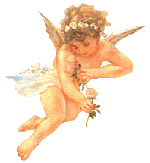|
||||||
Italian Renaissance Art
The Roman Church had moved to Avignon, France in 1309. Therefore, Giotto like other aspiring Italian Renaissance artists of his time received no assistance from the Italian papacy during his career, but the papacy would soon play an important role in the lives of Renaissance artists. Giotto's commissions came from wealthy Italian merchants. While Giotto started the movement toward naturalism in Italian Renaissance art, his advancements would not be further explored until the papacy returned to Rome in 1378. With the return of the papacy to Rome, so commerce returned and with it a new flurry of construction began; that new construction provided work for artists. Further, new construction required excavation, and this produced a wealth of "new" antique artifacts providing a wealth of source material for Italian Renaissance artists like Michelangelo. All of these factors within the culture of the elite created an atmosphere which was conducive to the development of Italian Renaissance art. Brenda Harness, Art Historian
Italian Renaissance Artist Listing, featuring such important artists such as Leonardo, Michelangelo, Raphael and Titian, and many others. Primary Italian Renaissance art periods/movements including Trecento, Early Renaissance, High Renaissance, Late Renaissance/Mannerism, and Venetian Renaissance. The writings of Italian Renaissance artist Giorgio Vasari offer a wealth of information about the art and artists of his time, his very name synonymous with accuracy of information. Nero's Golden House, now buried for 2000 years, was newly discovered in the Renaissance with its classical Greek sculpture and frescoes intact, profoundly influencing Italian Renaissance art. Italian Renaissance Artist Listing: A - L Italian Renaissance Artist Listing: M - Z
| ||||||
|
|
Welcome ! |
|
We respect your privacy and will never sell your personal information. |
| Click here to sign up for our newsletter. |
Buy great
art books
at Amazon!
Home Glossary of Terms Contact Us About Us Newsletter Subscription
